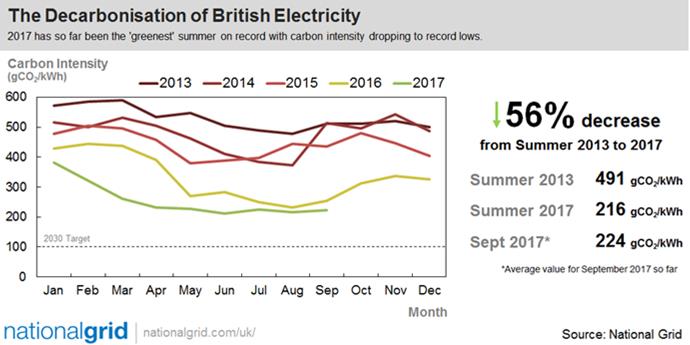 National Grid has launched software that predicts the likely carbon intensity of power on the system up to 48 hours ahead.
National Grid has launched software that predicts the likely carbon intensity of power on the system up to 48 hours ahead.
It has also launched an open API and hopes apps developers will take its datasets and create ways for households and businesses to use power when it is cleanest and potentially most cost efficient.
The programming software combines National Grid and Met Office data to forecast the share of renewable and non-renewable energy that will be on the UK electricity grid over the next 48 hours, and the resulting carbon emissions. National Grid’s data has been verified by experts from Oxford University.
“We’re providing our forecast data in a format that allows technology companies to build innovative apps and software that could make a real difference to how and when people use energy,” said National Grid director of System Operator, Duncan Burt.

“Clear and concise information that can tell you in advance when’s best to turn on the washing machine, load the dishwasher or charge your car for example, is a step in the right direction towards a low carbon future. This technology puts people at the heart of it, helping everyone to use power when it’s greenest, and likely, more cost efficient.”
Changing fast
National Grid launches the tool as the pace of change within the energy system kicks up a gear. The company noted that the summer had seen several firsts within the space of a few months: In April, the first working day since the industrial revolution that coal did not play a role in power generation; record solar PV in May; renewables meeting more than 50% of UK electricity supply in June and record carbon intensity lows within the same month (90g CO₂/kWh – compared to an average intensity of 313g CO₂/kWh forecast for today, according to the tool).

Meanwhile, for the three months to 22 September, National Grid said almost 52% percent of UK electricity generation was met by low carbon sources, compared to around 35% four years ago.
The increasing penetration of renewables combined with the corresponding drop off in thermal plant creates a significant challenge for the System Operator. It means there is less inertia in the system with which to keep frequency stable, and means National Grid has to work harder and faster to balance the system when frequency deviates.
By encouraging more people to think about when they use power, the System Operator may help relieve some of the pressure on the system.
Carrot and stick
But trying to change consumer habits will not be easy and may require sufficiently strong price signals.
Conservation group WWF, which has implemented the API into a re-usable widget that can help people plan their energy use, called for time of use tariffs to be quickly introduced.
The Environmental Defense Fund Europe, which is working on policy implications of having the intensity data available and widely understood, urged the energy industry to collectively harness the data to create a cleaner, smarter grid at lowest cost to consumers.
See the tool here.
Related stories:
Ofgem mulls what to do if people don’t engage with smart meters
Society must rethink its approach to electricity use, says Ofgem networks chief
Government sets out smart energy plan, moots peak pricing for all
UK loses 11.4GW of coal and gas fired generation in three years
As solar generation makes history, National Grid starts to feel the burn
Ofgem paves way for major changes to energy system rules and charges
Solar onshore wind and biomass add 4GW to UK generation capacity in 2016
Solar PV hits 12GW, further 3GW in planning
Gas picks up coal’s share of generation as renewables output remains flat
Cordi O’Hara: Gas will be central fuel for years to come
Upside and Powervault installing 1MW of batteries and hot water tanks to unlock domestic DSR
Eon trades off variable tariffs for potential smart meter gains
Click here to see if you qualify for a free subscription to the print magazine, or to renew.
Follow us at @EnergystMedia. For regular bulletins, sign up for the free newsletter.



